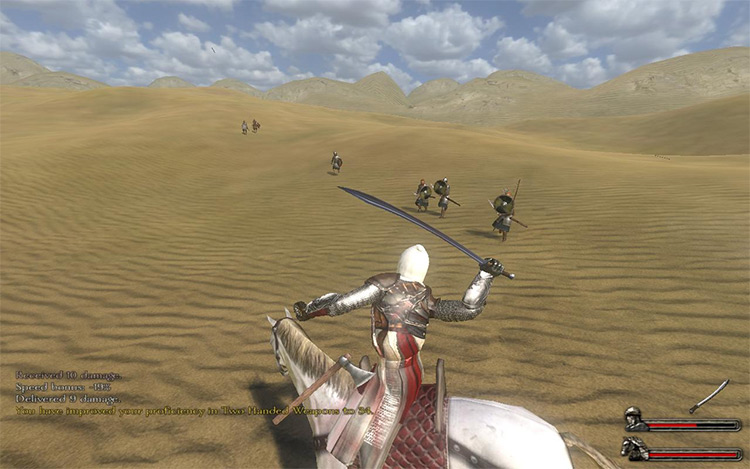
The orginal Vaegirs seem to be inspired by the early Viking/Varangian-influenced Russians, such as the Kievan Rus’, or the Novgorodians led by Alexander Nevsky. Their officers, usually nobles, can be recognized on the battlefield by the family coats of arms they wear on their shields. As warrior monks, they wear humble civilian clothes. They are ruled by a Master and have various forms of a red cross on their surcoats. The Swadians are no longer a kingdom but a crusading order, similar to the the Livonian Sword Brothers. Their equipment is old-fashioned for 1257, which, although slightly exaggerated, has a basis in historical fact (see readme). The “Nords” are now the Northern Kingdom, a stand-in for Norway, Sweden or Denmark with cavalry similar to the early Normans. When you take an oath of allegiance to one of the faction leaders, that leader will bestow a special gift to you that symbolizes your adherence to the respective faction and marks your status (see readme file for more details). This makes leaders easily identifiable on the battlefield. Khergit have gold shield buckles to mark their rank. Swadian Order troops bear crosses on their shields, while their lords bear their family coat of arms. The Northmen, Vaegirs and Rhodoks won’t adapt their leader’s banner on their shields, which instead feature many different patterns. Ten of the in-game banner designs are available to the player to be worn on the surcoat and horse caparison (see readme file for details).

This can be recreated in 1257 AD by combining any of the seven colors of surcoat available in the game with your own banner. Surcoats were usually held in one plain color, which either repeated or contrasted a color featured in the coat of arms. In the mid-thirteenth century, knights wore their coat of arms mainly on their shields and on the caparisons of their horses. Knighthood has been emphasized by adding three new knight companions to recruit, and having real knights participate in the tournaments.

The most expensive are now knights with individual heraldry.

The mercenaries you can recruit resemble Western European forces of the mid-thirteenth century. The factions have been tweaked to resemble the historical powers of the Northern European / Baltic region – both because this seems to be what Calradia is mainly based on, and because it makes for interesting gameplay. Rather than spend limited resources on a total rewrite with a thousand new items, care was taken to ensure that what goes in is done right, and that the Mount & Blade experience stays as true as possible to the mid-thirteenth century period within the game’s original setting. The philosophy here has been to concentrate on quality.


 0 kommentar(er)
0 kommentar(er)
